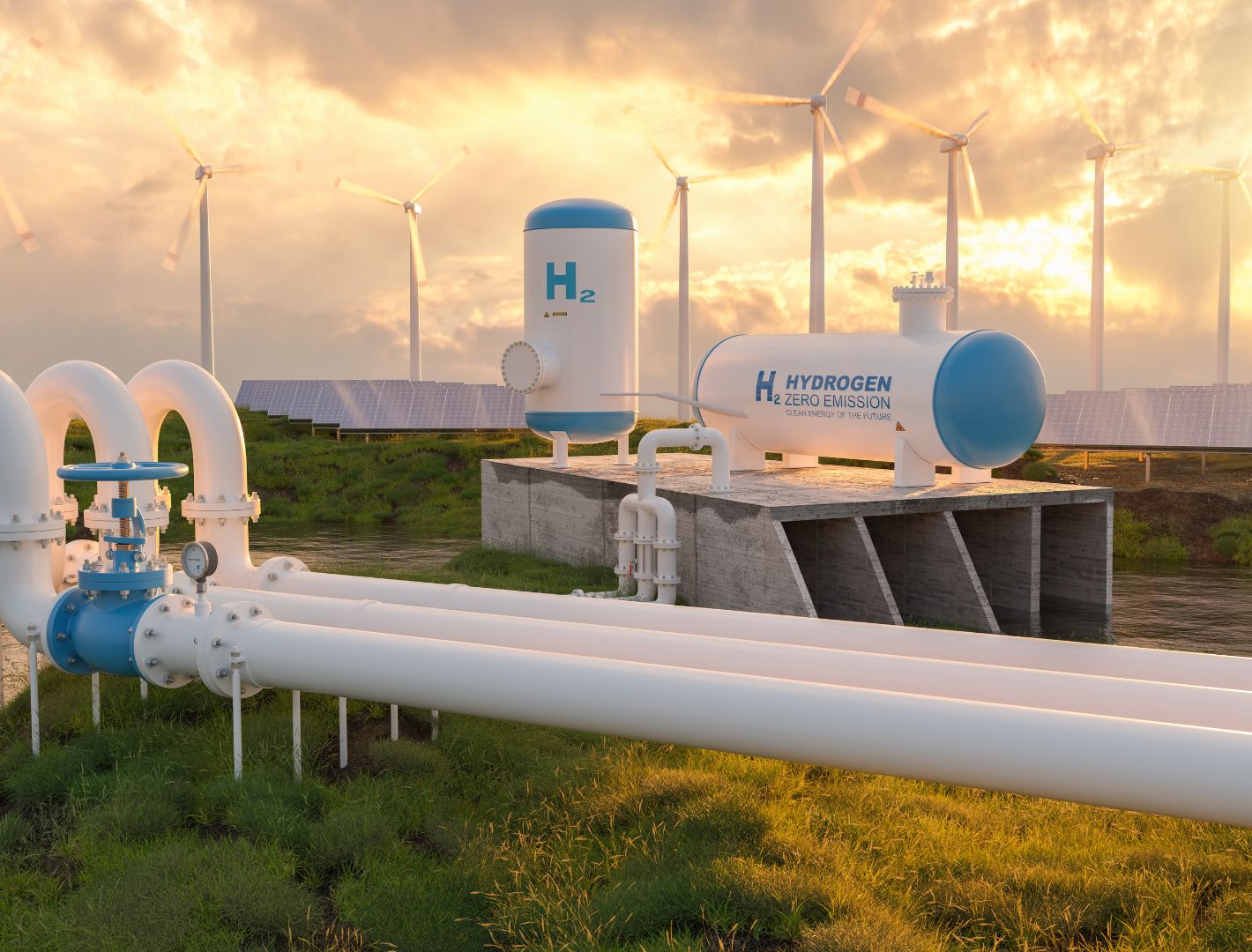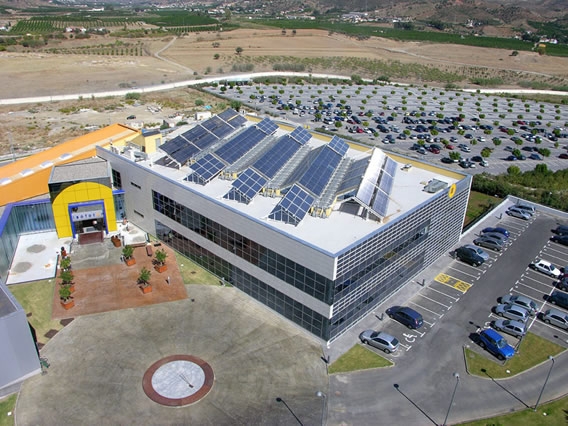
Wind Energy
Wind energy is not only growing unstoppably in Spain, but it has also become the best demonstration that renewable energies can contribute to transforming the traditional energy model.
Wind energy generates a very significant percentage of the electricity capacity in our country and is, together with solar and hydro energy, one of the main sources of renewable energy.
Arrate develops 2.5 GW of wind energy in Spain.
You can see the different elements of a wind turbine in the following illustration

Solar Energy
The Arrate Group develops more than 3 GW of photovoltaic energy in Spain and has six solar parks under construction with a total capacity of 500 MW.
Energy generated by photovoltaic solar panels is inexhaustible and emission-free, just like wind energy, making it one of the pillars of the Energy Transition.
Spain, due to its long hours of sunshine (between 2,500/3,000 hours per year) is one of the leading countries in this technology, which is already the third renewable source in our country.


Biomethane
With waste generation continuing to increase, there is a need to harness this resource to produce renewable energy in a sustainable manner.
In this context, biomethane production fits this model, being also a method of recycling biodegradable organic waste and, when used as a fuel, a major consumer of greenhouse gases by removing methane from the atmosphere.
Biomethane plants use the waste generated by (mainly) livestock or industrial activities to generate a renewable gas that can be injected into the grid directly for further consumption in households or industry or used as a vehicle fuel.
You can see how it works in the illustration below.

Green Hydrogen
Green hydrogen, also known as renewable hydrogen, is a clean fuel source with the potential to play a key role in the energy transition.
This technology is based on the generation of hydrogen, a universal, light and highly reactive fuel, through a chemical process known as electrolysis.
This method uses electric current to separate the hydrogen from the oxygen in the water. If this electricity is obtained from renewable sources, we will produce energy without emitting carbon dioxide into the atmosphere, thus obtaining green hydrogen.


Self-consumption
Self-consumption allows, both at industrial and private level, to generate the energy to be consumed in the same space of activity thanks to the installation of solar panels or other renewable generation systems.
Grupo Arrate is developing a total of 80 MW of self-consumption for large industrial complexes in Castilla-La Man
In addition to boosting renewables, it means savings on electricity bills and less dependence on changes in the price of electricity tariffs, as part or all of the consumption is covered by the energy generated by the self-consumption system.


Hybridisation
Hybridisation of technologies makes it possible to complement one energy source with another and even to complement different technologies with the storage of the energy produced.
For example, most of the wind farms developed by tGrupo Arrate hybridise wind energy with photovoltaic energy. In this way, the output of the installation is more stable in a farm that has solar panels and wind turbines at the same time.


Storage
Energy storage is the ability to keep the generated energy stored so that it can be released when demand arises. With an efficient storage system it is possible to store surplus renewable energy so that it can be supplied when needed in times of low production.
In this way, at times of high sun or wind, solar and wind technologies could reserve this surplus energy for release at times when there is insufficient resource.





